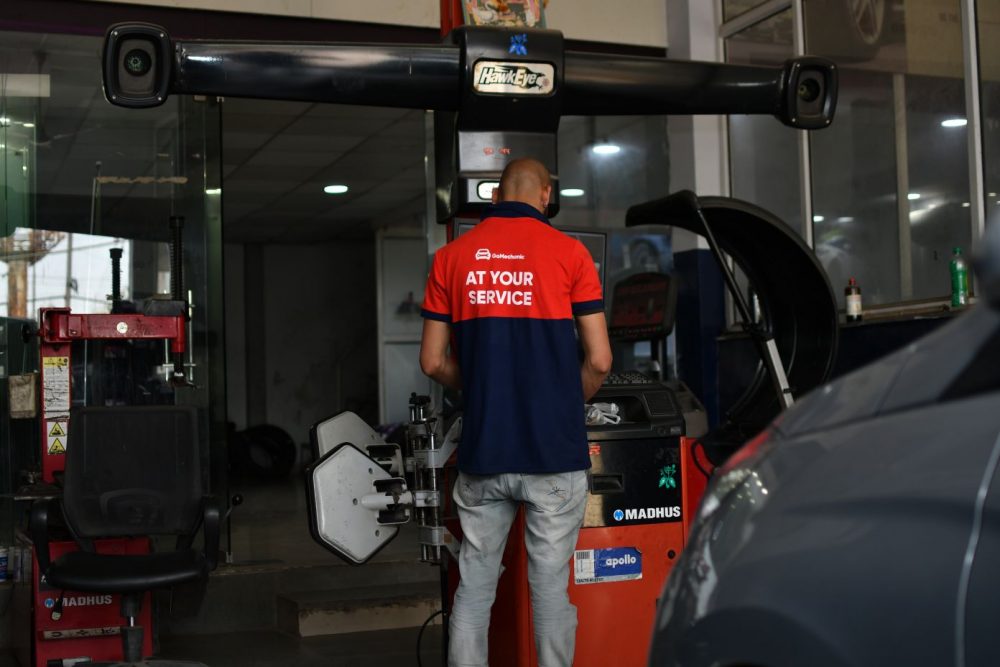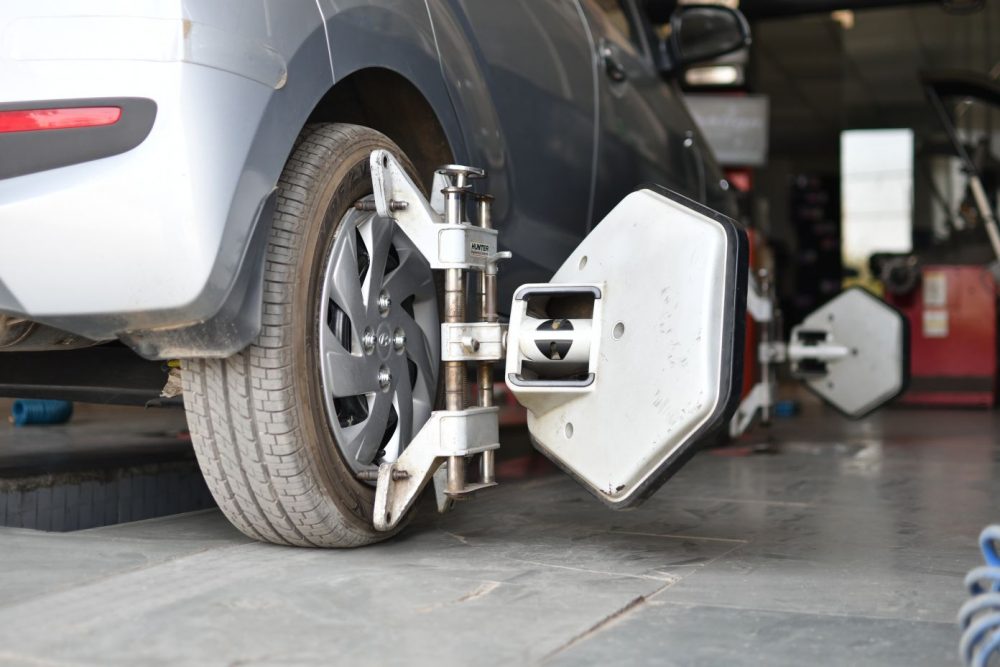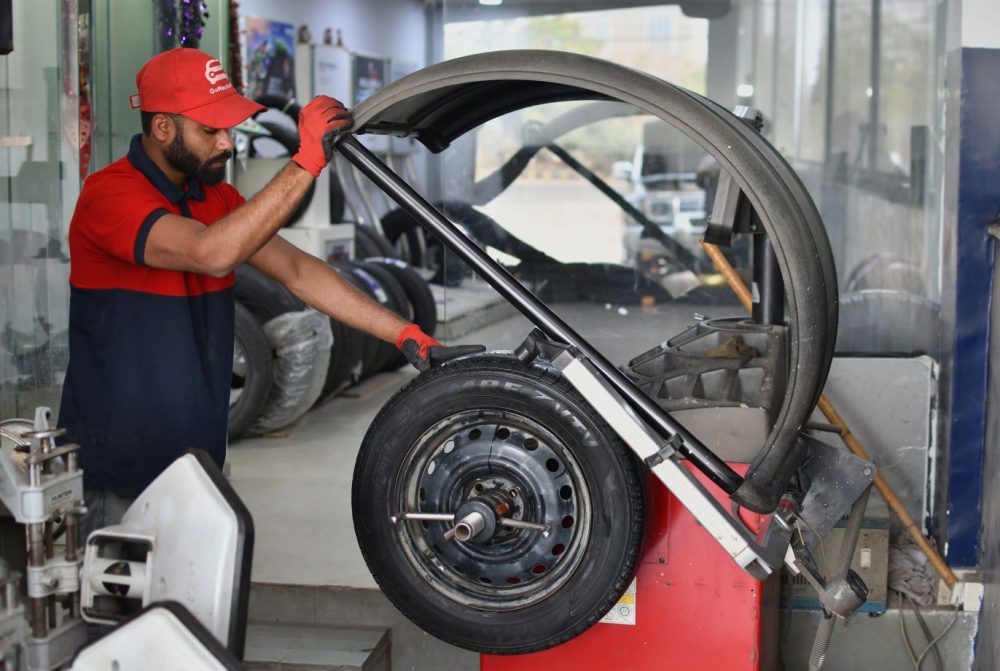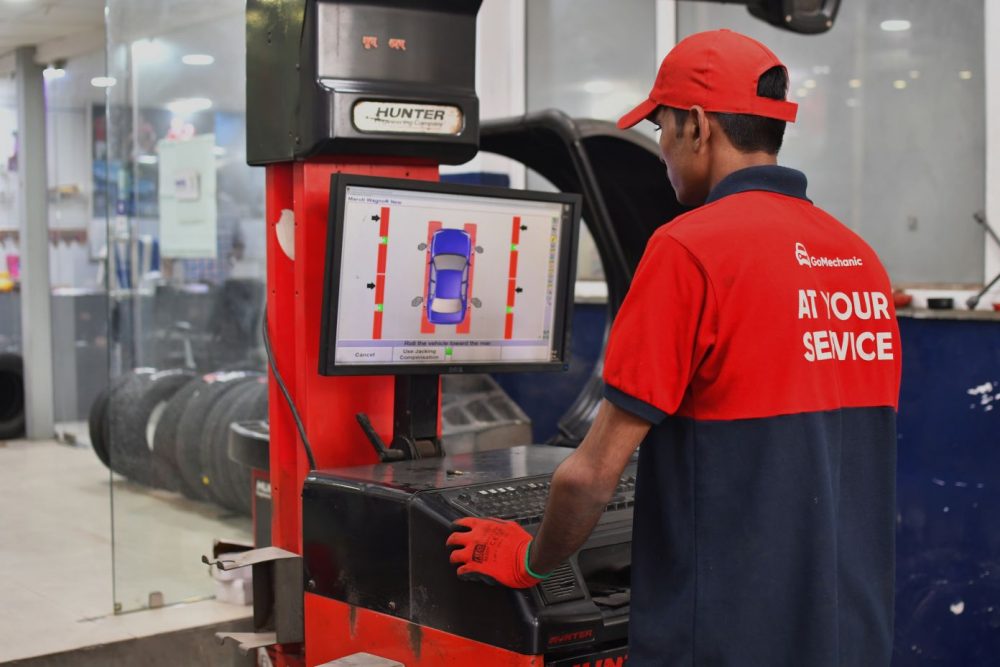Being in Control of the things you do is always a good feeling and this has never had a more significant meaning than in terms of driving a car (or any vehicle for that matter). It is of utmost importance for a driver to have a sense of control over the manoeuvrability of their vehicle. And tyres, which are the contact points of a vehicle to the road play a very crucial role in ensuring that confidence for the driver.
Here is Why Your Car is Having Miss-Aligned Wheels
Suggested: Car Tyre Markings: What do they mean?
The name of the game for car care has always been to spend a little time and money every now and then in order to prevent a giant bill later. The same goes for keeping your tyres in check. Hence today we explain the three most significant aspects of tyre care, wheel alignment, wheel balancing and tyre rotation.
Wheel Alignment

What is wheel alignment?
People often misconceive the process of alignment as an adjustment to the wheels itself. Wheel alignment refers to the adjustment of the car’s suspension in order to achieve a suitable angle at which the tyres make contact with the road.
Causes of Alignment going off
- Having a sudden impact on the road
- Running into a pothole at high speed
- Minor collisions or hitting a curb
- Sudden manoeuvres
How do you get to know that your car’s alignment is off?

- If your car’s steering feels unusually heavy on one of the sides and it seems hard to keep the car straight line even while cruising at low speed. Basically your car unintendedly keeps running towards one side of the road.
- If the steering wheel begins to transmit heavy vibrations
- If you observe indented tread wear on the tyres
How is misalignment corrected?

Misalignment happens when the angle of the tyres of your ride is off from the linear position they are in. So to correct it, the technician is majorly concerned with three aspects:
- Caster angle: It is the angular displacement between the steering’s axis and the vertical axis of the wheels being steered. This is concerned with maintaining stability and balance while steering the car. The mechanic tends to find the fine balance bet positive caster angle and negative caster angle to correct misalignment.
- Camber angle: it is concerned with mending the angular proportions between the wheels vertical axis and the vertical axis of the car when viewed from the front.
- Toe Angle: this is the angle which the tyres make while moving outwards or inwards with the longitudinal axis of the vehicle when viewed from a top angle.
Once all the three angles get back in sync, the suitable wheel alignment is achieved.
Also Read: Alloy Wheels Vs Steel Wheels | GoMechanic Basics
Wheel Balancing

Wheel balancing is something which is strictly concerned with the wheel and the tyre correlation. It refers to correcting the imbalance between The weights of the wheel and the tyre. Balancing is always done alongside wheel alignment to keep the weight and alignment coordination in sync.
Maintaining a balanced weight in the wheel/tyre combination is significant for a smooth and stable drive, less tyre wear and eliminating vibrations. Unbalanced tyres increase the risk of wheel and suspension damage massively.
How is wheel balancing done?
- Step 1
All four tyres are taken off the vehicle and placed on a computerised wheel balancer. - Step 2
All four wheels are tested individually for weight imbalance and the computer simulates all the specific irregularities. - Step 3
The weight imbalance is corrected by placing counterweights on the rim at the exact spot where the computer instructs. - Step 4
The wheels are checked again if the imbalance persists.
P.S: if you are required to use counterweights of more than 100 gms for a single wheel, then you might want to consider changing your rim or tyre.
Next Read: Nitrogen Vs Air | Which Is Better For Your Car Tyres?
How often you should get wheel alignment and balancing done?
Wheel alignment and balancing should be done after every 6000-8000kms on an average and while getting a new set of tyres.
Tyre Rotation

Now, this is something which you should also get done while your car is in for alignment and balancing.
Tyre wear is never uniform on all four wheels whether it is a Front-wheel drive, Rear-wheel drive, Four-wheel drive or All-wheel drive car. The front two tyres always take a greater beating as they are subjected to more pressure due to constant steering and braking and also due to the offset of most of the weight to the front of the car.
Hence in order to have uniform wear of all four tyres, it is advisable to interchange tyres between the front, rear and spare wheel.
There is Four-wheel and Five-wheel rotation method of doing a tyre rotation. Both have different patterns for Front-Wheel, Rear-Wheel, and All-Wheel drive cars.
Must Read: Tyre Rotation: What You Need To Know
Four-Wheel Rotation
- Front-Wheel Drive
The front wheels are to be installed on their corresponding rear hubs. The rear wheels then, in turn, are crisscrossed with the front hubs i.e the Front-left wheel goes onto the Rear-left side and the Rear-left wheel will go on the Front-right side. - Rear-Wheel and All-Wheel Drive
The rear wheels are to be installed on the corresponding front hubs. The front wheels then, in turn, are crisscrossed with the rear hubs i.e the rear left wheel will be installed on the front left side and the front left wheel will be installed on the rear-right side.
Five-Wheel Rotation
- Front-Wheel Drive
The front wheels are to be installed on their corresponding rear wheel hubs. The rear left wheel is then used as the spare wheel while the spare wheel is to be installed in place of the front right wheel. The rear right wheel then goes in place of the front left wheel and hence the rotation is completed. - Rear-Wheel and All-Wheel drive
The front wheels are crisscrossed and installed on the opposite rear wheel hubs. The rear left wheel then gets installed on the front left wheel hub while the spare wheel gets installed on the front right wheel hub. The rear right wheel then goes in the place of the spare wheel and hence the rotation is completed.
Tyre rotation is very crucial for ensuring long life and better performance of the tyres.
Wheel Alignment, Wheel Balancing, Tyre Rotation and Periodic Tyre Replacement are crucial services that require professional help. At GoMechanic, you get expert mechanic and technicians, industry-grade workshops and equipment, 100% genuine OEM and OES spare parts specific to your car.

That’s not all, you get FREE doorstep pick-up and delivery and savings of up to 40% on car services compared to authorised service centres. So what are you waiting for, experience quality car service and solutions only at GoMechanic!
Visit the GoMechanic website or download the official app here.






Nice teaching
Indeed , a great refresher. Keep it up. Regards.
Thanks.
Extremely thankful for disseminating this vital information which has enormous impact on ride & handling characteristics of vehicle.
thanks for the brief. please can tell how often tyre rotation should be done?
We recommend you to go for tyre rotation every 8 to 11 thousand kilometres.